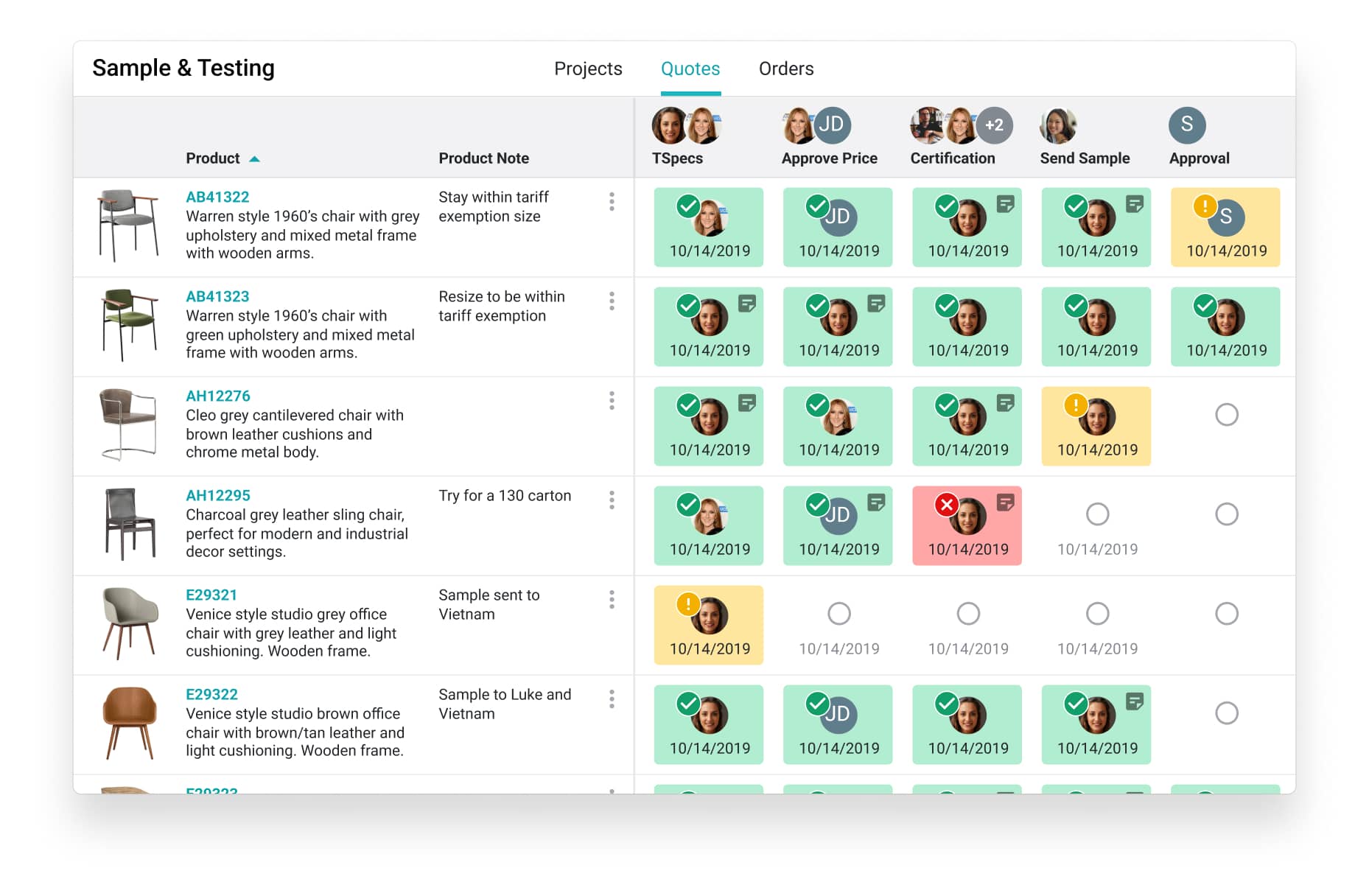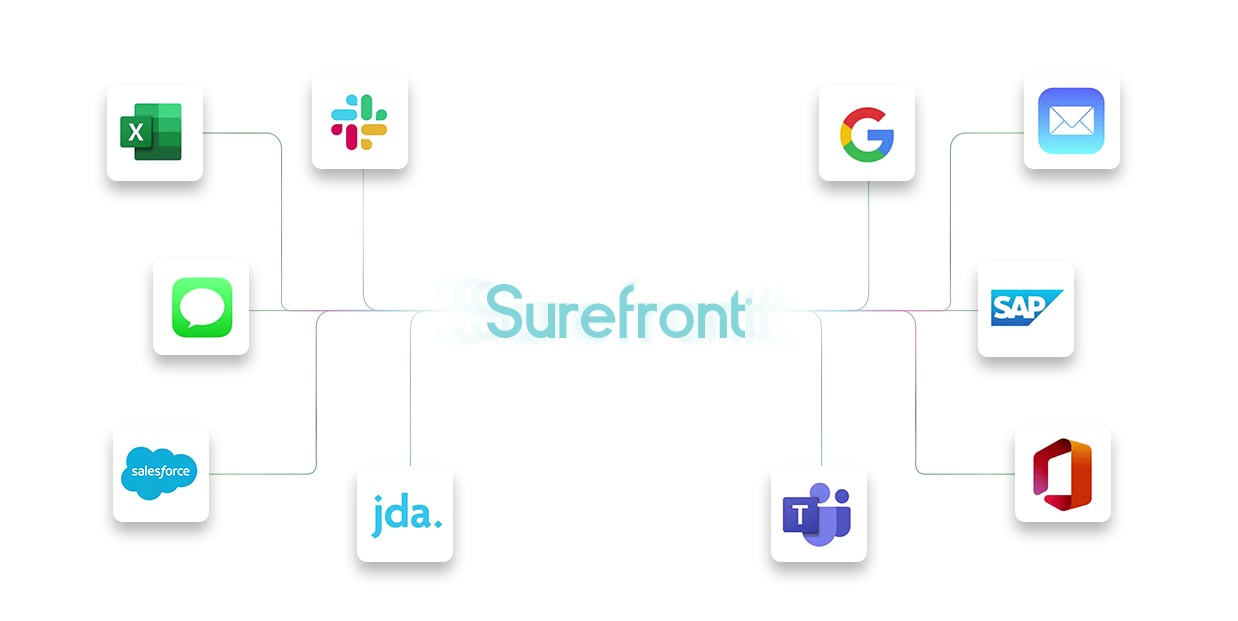Share this
Is Product Information Management Software Part of PLM?
by Surefront on May 26, 2023 10:03:43 AM
Home > Blog > Is Product Information Management Software Part of PLM?
Table of Contents
- Where does digital asset management fit in?
- Core differences between PIM and PLM systems
- Let's go a bit deeper on PIM vs PLM
- Core functions of PLM systems
- Traditional PLM software neglects sales and marketing
- Your retail team needs to communicate with external entities
- Surrounding terminology: ERP and CAD systems
- PIM systems ignore the product development process
You didn't get into the retail industry in hopes of spending weeks tracking down product data. However, as customer expectations continue to rise, your retail team's success will be determined by their ability to communicate accurate product information. Ready for step 1? Choosing the right product information management software is the first step.
By getting relevant data to the right stakeholders in a timely fashion, you will increase your product's speed to market. The right product information management PIM and product lifecycle management PLM software solutions will help you create a competitive customer experience and list products on online marketplaces in record time. But you need the right infrastructure in place to do this.
Let's demystify PIM and PLM tools. We'll talk about the core differences between PIM vs PLM systems, how PIM systems pick up where PLM tools leave off, and the future of both PIM and PLM.
Where does digital asset management fit in?
Digital asset management technologies can help to facilitate accurate product data sharing throughout every phase of your product's lifecycle. (Digital asset management refers to product images, product data, videos, and all other product related information.) The term "DAM software" is often used interchangeably with PIM platforms and they function in a very similar way. However, product information management software can be used for enterprise or mid-sized businesses. DAM, on the other hand, is a valuable touchpoint in the enterprise resource planning process.
Both product lifecycle management PLM and a product information management PIM system can help your team manage digital assets and utilize product data effectively, but they work in different ways.
Core differences between PIM and PLM systems
Product information management PIM and product lifecycle management PLM are both tools that help supply teams with accurate data throughout a product's entire lifecycle. PIM and PLM systems help retailers get digital assets including: technical specifications, product descriptions, accurate historical data and more, to the right stakeholders. But the similarities end there.
Both PIM and PLM software go beyond generic communication software to streamline a specific set of actions throughout the product lifecycle. However, they differ in which phase of the product lifecycle they address.
Let's go a bit deeper on PIM vs PLM
PLMs are primarily focused on product development data. The design, production, and shipping process all fall under the product lifecycle management software umbrella. However, a traditional PLM system won't address the process of distributing products on sales channels.
While PLM platforms tackle the design and production process, PIM software tools are primarily focused on the sales and marketing process. PIM solutions are also called PDM, or product data management tools. PIM houses the product data that your sales teams and marketing teams need to target customers.

Core functions of PLM systems
Product lifecycle management PLM software is nearly as varied as the companies that produce it. With that said, all PLM software focuses on the product development process. This starts with product design: sharing manufacturing drawings with the engineering team, locking down prototype specifications, verifying product compliance and creating product descriptions.
Beyond that, the functions of your PLM system will depend on the service provider and integrations you choose. Additional product lifecycle management functions include: facilitating communication throughout the development process, sharing your entire product data with stakeholders, and your product retirement/returns process.
Since most PLM software isn't built with retail in mind, few solutions give you the opportunity to chat with external stakeholders. Most PLMs still require teams to have their enterprise resource planning and product related discussions that require outside input using disparate tools.
Traditional PLM software neglects sales and marketing
What retailer doesn't want to get to market faster? A traditional PLM platform expedites the product lifecycle process, but it doesn't help with communicating outside of your organization. The average product lifecycle management system also lacks sales and marketing capabilities.
But any software that helps you get products to market faster shouldn't stop at your product lifecycle processes. The product development phase is just the beginning. Once your product development team produces the product, you still need to find customers, create a marketing campaign, list products, and ship them to the right people. Your team can't expedite these processes if your software only allows them to communicate with one another.
Your retail team needs to communicate with external entities
Buying and selling teams need to communicate with outside entities to do their jobs. From confirming technical specifications with engineering to learning how to list products on different online marketplaces, from confirming product orders to giving customers after sales support, the lion's share of your buying/selling team's time is spent interfacing with external entities.
The faster your sourcing/sales team can talk with stakeholders, the more refined your process. Streamlining your collaboration process will drastically increase ROI, increase time to market, and boost customer satisfaction. Let's put this in context: By using Surefront's unified platform with external chat tools, home furnishings wholesaler, JIA HOME, was able to increase revenue per employee RPE by 150%.

Surrounding terminology: ERP and CAD systems
Product lifecycle management platforms are often confused with other platforms. Two of the most common being ERP and CAD, but they aren't the same thing. While enterprise resource planning ERP systems focus on financial data and supply chain data, PLM stores and shares product data throughout the product lifecycle.
Both PLM and PIM systems are focused on product information: whether it's centralizing data (PIM solution) or communicating about product specifications with the larger team (PLM solution). Unlike other software, ERP solutions manage the whole shebang. This isn't to say that ERP tools don't manage product data, because at times they do, but they're more focused on acquiring data than centralizing and exporting it.
ERPs are the most comprehensive retail software solution we'll cover here. Computer-aided design CAD systems, on the other hand, fall on the other side of the spectrum. CAD provides engineering teams with a granular view of the product design process, fitting under the PLM tool umbrella. Engineering teams create CAD renderings to mock up new products and help the team agree on product attributes.
PIM systems ignore the product development process
So, what's the answer to PIM vs PLM? PLM capabilities are a valuable resource for managing the internal data from product development teams, historical data from your team's communications, and the B2B data exchanged in the sales and listing process. Product information management software, on the other hand, focuses on the data that your sales and marketing teams share on sales channels.
Let's talk a little more about product information management PIM. A PIM system is a centralized hub for all information related to the marketing and sales process. Think of the high level information that your team would share on sales channels, such as your social media platforms, online catalog, and with frontline store associates. That's the data housed in your PIM software.
Let's go a bit deeper on PIM software
PIM solutions deal with the data that would interest your end consumer. So what data can be stored in a PIM system? Look for: product specifications, technical details, design data, and even production data –– factories, pricing, product components, etc.
While it may seem like supply chain data would be relegated to a B2B focused PLM system, today's customers are increasingly concerned with the environmental impact of their purchases. As such, brands and retailers need to supply them with more data than ever to solidify sales. That's where your PIM system comes in.
There is quite a bit of overlap between PIM software and PLM systems. They're both focused on housing all of your data in one singular hub. But, it's how they allow your team to access that data, and what your team can do with the assets once they're accessed, that really determines what kind of ROI you get from your software investment.
Do you need product information management software or PLM?
It's not a question of PIM vs PLM. The best standalone PLM and PIM software is hard to define, since the functionality of integrated solutions often spills over into other categories. Think about it this way: you don't want a PIM solution that doesn't let you chat with your team about the data in question, do you? What about a PLM without the necessary data storage capabilities?
And what about your ability to communicate with external and internal teams? A unified PIM and PLM system still won’t have that functionality, since chat tools and collaboration fall under the customer relationship management CRM umbrella. And the ability to syndicate products across 100s of different retailer websites? Product syndication is a unique feature that few solution providers have mastered, but Surefront users already enjoy.

Product lifecycle management gets unified in 2023
Whether you're looking for PIM software, a PLM with varied functionalities, or a CRM to expedite your sales process, you don’t want your data to be siloed. Your company’s PIM, CRM, and PLM solutions shouldn’t operate in a vacuum, either. Surefront is a Unified Product Collaboration Platform to power growth and ROI.
Surefront offers patented PIM, CRM, and PLM solutions to streamline the omni channel sales, merchandising and product development processes. By combining these essential functionalities, Surefront creates a single source of truth throughout your sales and listing processes.
Share this
- PLM Software (36)
- PIM Software (29)
- Apparel & Fashion (20)
- Trending Topics (20)
- Merchandising (16)
- CRM Software (13)
- PLM Implementation (11)
- Catalog Management (6)
- Tech Packs (6)
- PLM RFP (5)
- Success Stories (5)
- Sustainability (5)
- Data Import (4)
- Line Sheet (4)
- Luxury Goods & Jewelry (4)
- Product Development (4)
- Retail (4)
- Supply Chain (4)
- Category Management (3)
- Home Furnishings (3)
- Wholesale (3)
- Consumer Packaged Goods (CPG) (2)
- Cosmetics (2)
- Data Export (2)
- Health & Beauty (2)
- RFQ & Quote Management (2)
- Consumer Electronics (1)
- Import & Export (1)
- Industry Events (1)
- Inventory Management (1)
- Pet Stores (1)
- Purchase Orders (1)
- Report Builder (1)
- Textiles & Raw Materials (1)
- Unified Solution (1)
- Vendor Management (1)
- Visual First (1)
- White Paper or Case Study (1)
- workflow (1)
- October 2025 (3)
- September 2025 (3)
- August 2025 (4)
- April 2025 (4)
- March 2025 (3)
- January 2025 (8)
- December 2024 (5)
- November 2024 (3)
- October 2024 (5)
- September 2024 (6)
- August 2024 (2)
- July 2024 (1)
- June 2024 (3)
- May 2024 (4)
- April 2024 (5)
- March 2024 (3)
- February 2024 (2)
- December 2023 (4)
- September 2023 (2)
- August 2023 (5)
- July 2023 (3)
- June 2023 (2)
- May 2023 (2)
- April 2023 (4)
- March 2023 (5)
- February 2023 (3)
- January 2023 (5)
- December 2022 (4)
- November 2022 (3)
- October 2022 (4)
- September 2022 (5)
- August 2022 (4)
- July 2022 (2)
- May 2022 (1)
- February 2022 (1)
- January 2022 (1)
- September 2021 (1)
- May 2021 (1)
- April 2021 (1)
- February 2021 (1)
- May 2020 (1)